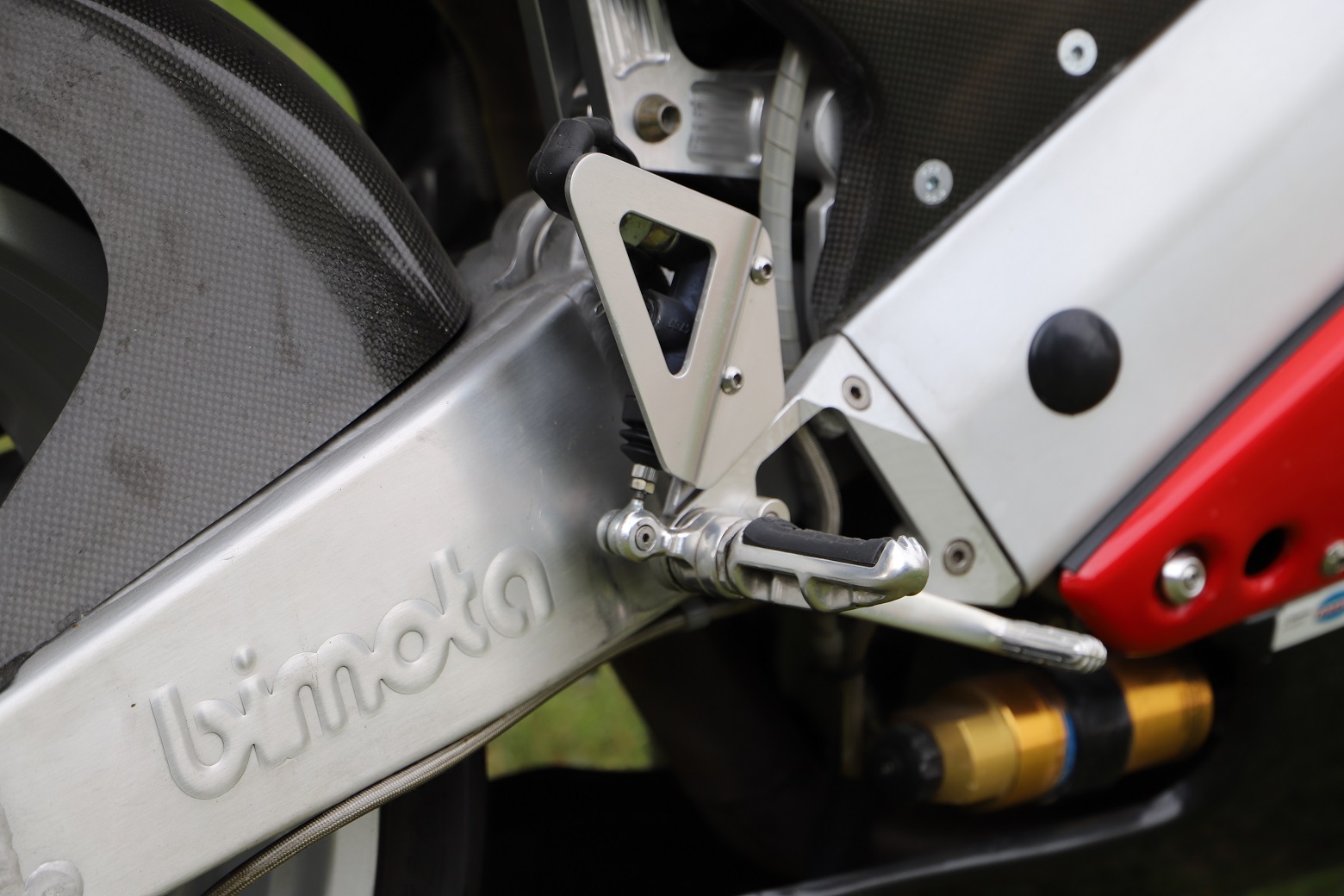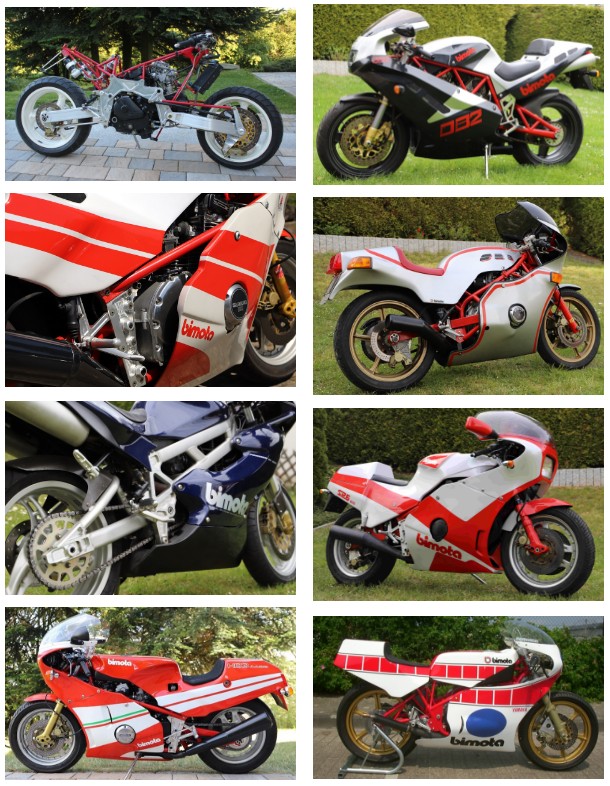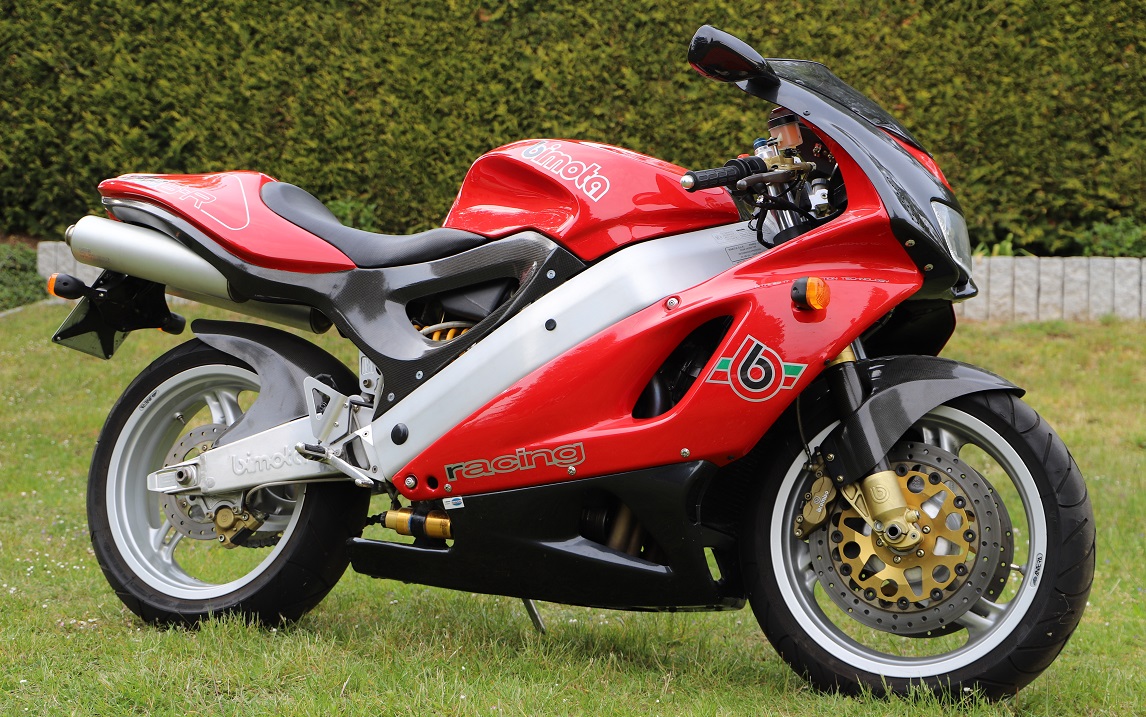
| Designer | Pier Luigi Marconi | Premiere | Köln 1996 |
| Production period | 1997 – 1998 | Production numbers | 600 |
| Power | 114 KW (156 PS) | Displacment | 1074 cc |
| Topspeed | 265 km/h | Weight | wet 208 kg dry 190 kg |
| Price | 33.000 DM (1997) | Colours | red / black carbon |
| Technical basis | Suzuki GSX-R 1100W |
Three years after the debut of the SB6 – the most successful Bimota model ever built – the upgraded SB6 R was unveiled at the 1996 Cologne Motorcycle Show.
The frame and engine remained unchanged from the SB6. However, modifications to the air filter, carburetor, and exhaust system allowed the SB6 R to consistently achieve its claimed 156 hp in real-world conditions, unlike the SB6. In early 1997, the German magazine Motorrad (issue 3/1997) tested a pre-production SB6 R and described its power delivery as follows:
„The aggressively surging four-cylinder demands full concentration and a delicate throttle hand. Otherwise, the Bimota will slide wildly out of every corner and keep the front wheel airborne at all times, no matter which gear is engaged.“
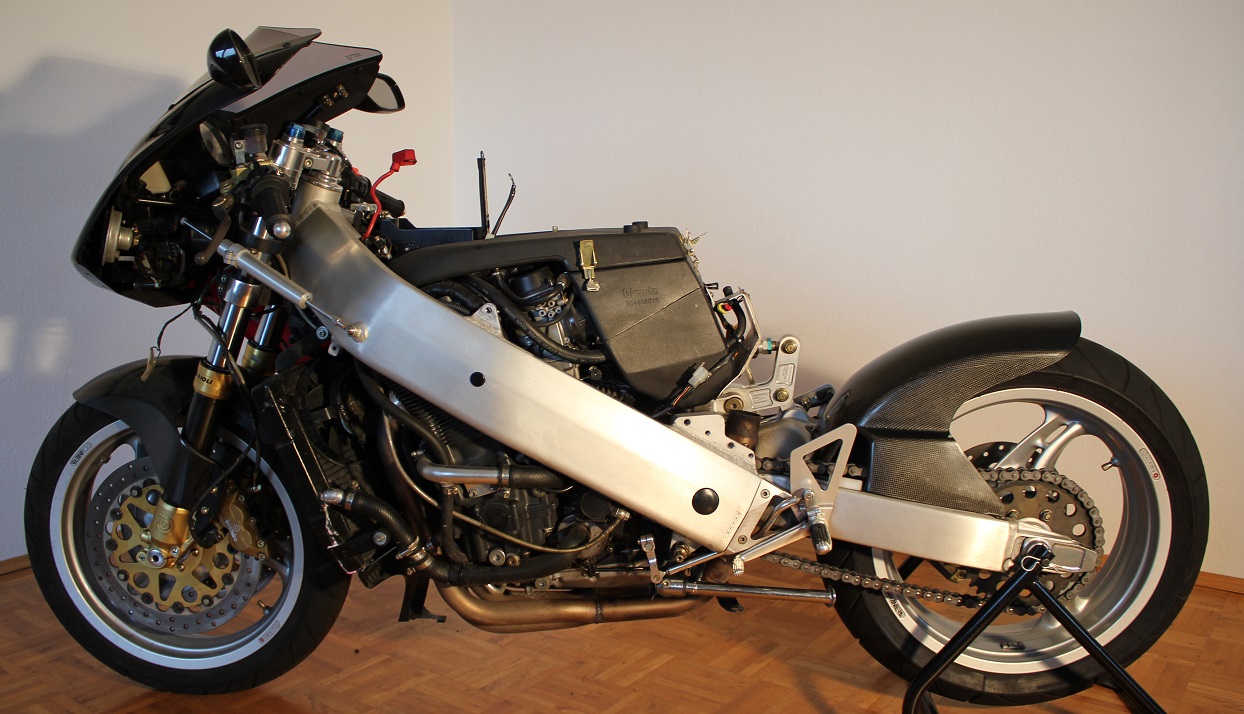
The fairing and monocoque were completely redesigned. Instead of a single-piece monocoque, the SB6 R featured a self-supporting carbon fiber rear subframe and a separate 21-liter fuel tank. Additional lightweight carbon fiber components were integrated into the newly designed, more dynamic full fairing, as well as the fenders and license plate holder.
A new, less progressive linkage between the swingarm and rear shock improved comfort and stability on rough roads. The swingarm was lengthened and reinforced for greater rigidity, increasing the wheelbase by 10 mm, further enhancing stability. The braking system and front 46 mm Paioli fork remained unchanged from the SB6, continuing to impress with their responsiveness and damping.
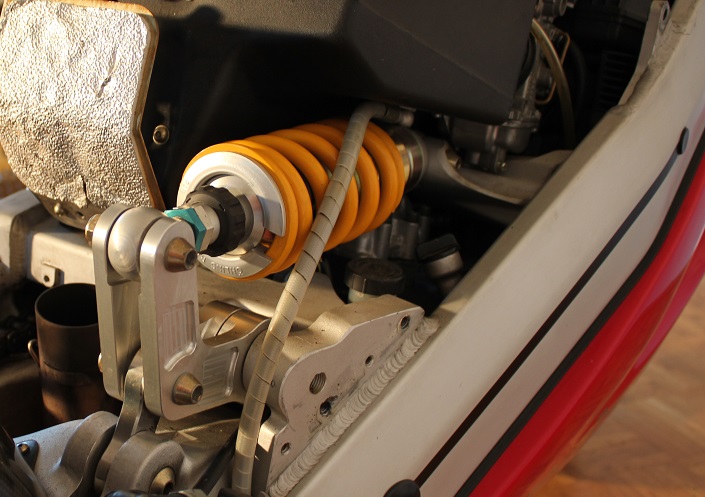
In a later test with a production model, the German motorcycle magazine Motorrad (issue 13/1997) praised the chassis:
„The massive bridge frame and sturdy swingarm ensure stability. The fork and rear shock – a Paioli unit up front and an Öhlins shock in the rear – offer every imaginable adjustment option. The suspension components respond sensitively, smoothing out road imperfections while also taming the most extreme bursts of aggressive riding.“
